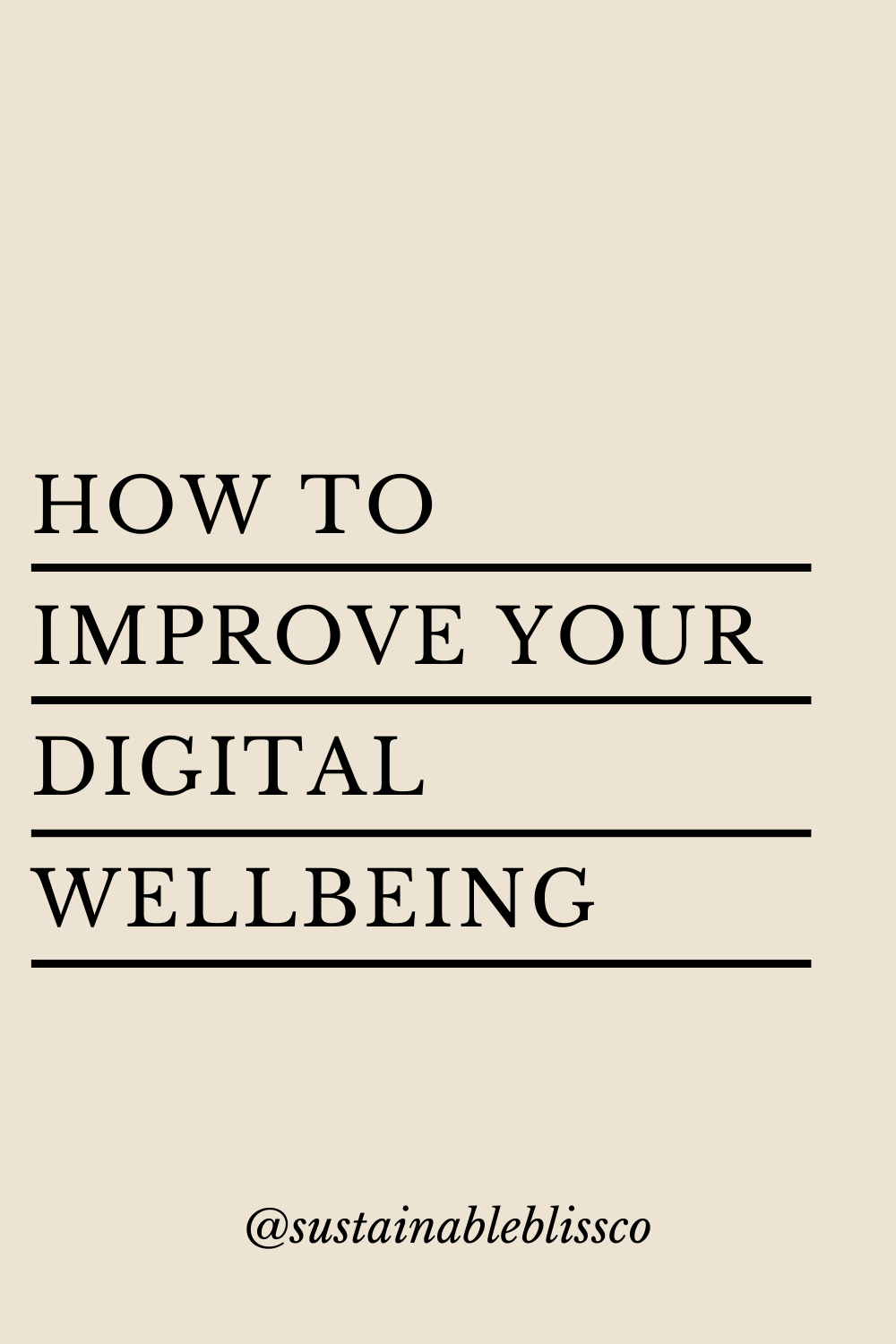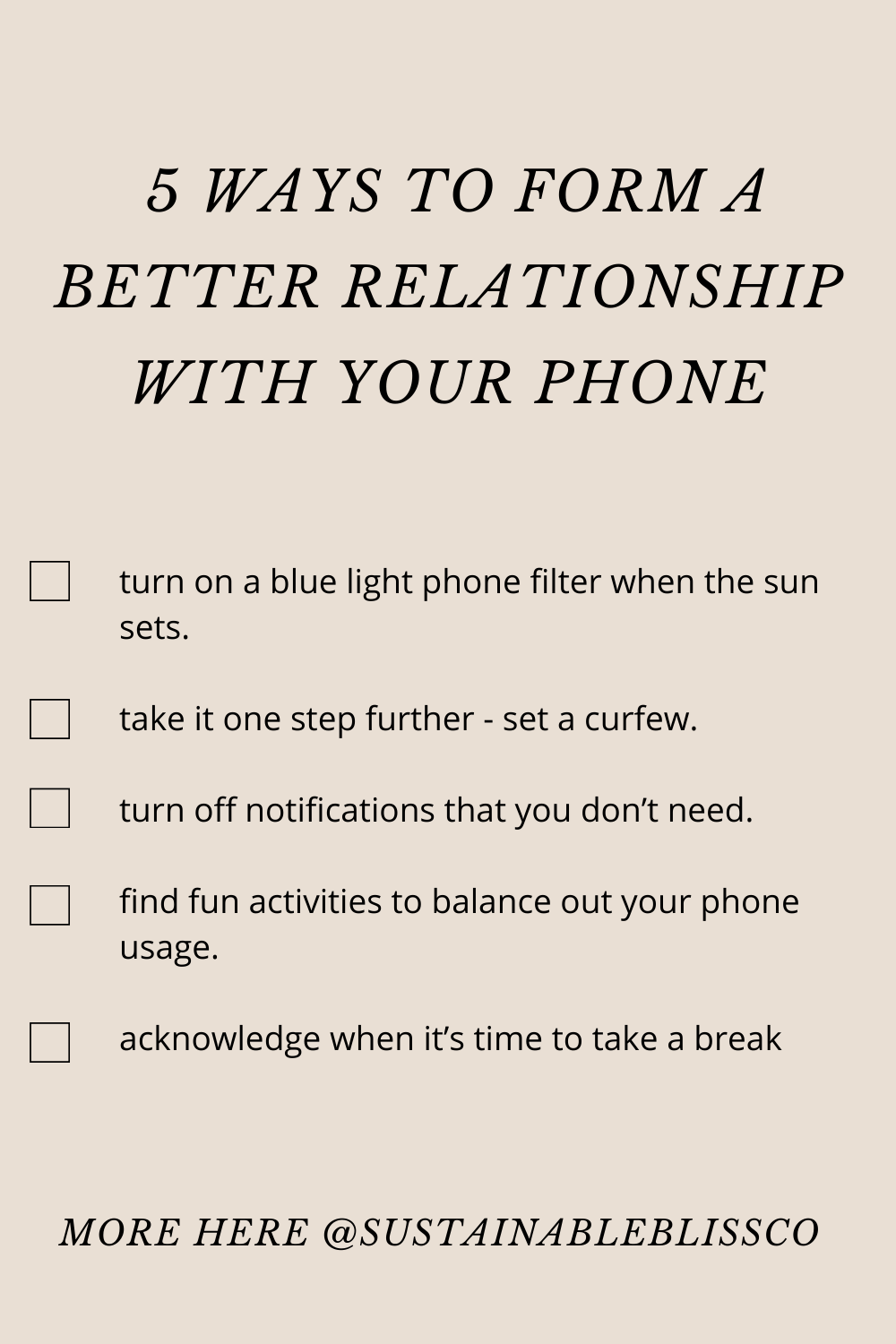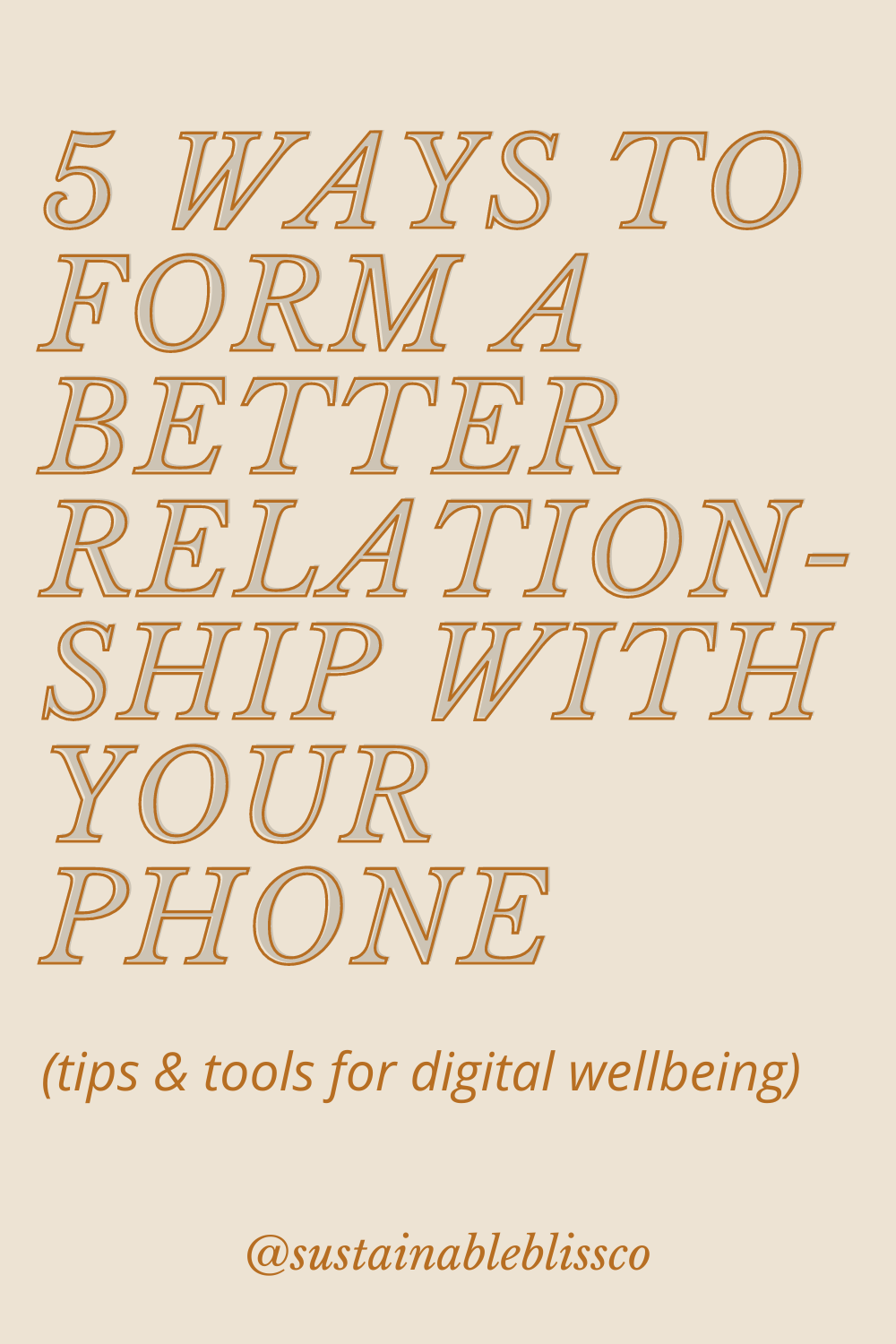digital wellbeing: 5 ways to form a better relationship with your phone
written by Sydney Lawson
There are 2 things that you and I both have in common, right now. We both have a phone. You might even be reading this on your phone right now. And, we both have experienced some form of anxiety at some point in our lives. I’d be willing to put money on that.
what is the connection between our phone usage, and the anxiety we feel?
Lately, phones have been pretty front and center in our lives - whether it’s virtual happy hour, checking in on a friend, or ordering groceries - they’re helpful for sure. But what are the adverse effects? This blog post breaks down some common symptoms of phone-related anxiety and proposes 5 different ideas to try to form a healthier relationship with your phone.
Here are some of the common symptoms experienced by people, with a direct correlation to phone usage:
Increased breathing rate and/or heart rate
Insomnia and/or difficulty getting to sleep
Feeling like social media is mandatory
Difficulty making decisions
Difficulty concentrating
Restlessness
Headaches
Overwhelmed by uncertainty
Have you experienced any of these?
digital wellbeing
“Digital wellbeing” is a movement that calls on us to acknowledge the potential harm that phone screens (and what we do on our phones) can do to our health. To help limit this potential damage, digital wellbeing strategies aim to help us take back control of our phone usage, and develop healthier habits with our technology.
5 ways to form a better relationship with your phone
1. turn on a blue light phone filter when the sun sets 🌖
In the settings of your phone, you’ll be able to find a “night mode” or “blue light filter”. You can set a timer for this so that it turns on every night when the sun sets (around 6-7pm). Night mode shifts the colours of your screen to a slightly warmer hue that reduces the amount of blue light coming from your phone. This blue light can trigger your brain into thinking it should be “awake”. It can also make your eyes super dry and cause headaches.
By reducing blue light, you might find it easier to get to sleep, or you might feel more tired when bedtime comes around.
2. take it one step further - set a curfew 😴
As mentioned above, looking at blue screens before bed can deplete the body’s natural melatonin levels, preventing us from entering a deep sleep. This can be a major contributing factor to insomnia. A solution might be to set a cut-off time for phone usage. I’ve heard people recommend to stop using your phone an hour before bed - but to be honest, I’m not ready for that yet. You could even start with 10 minutes and build it up from there.
3. turn off notifications that you don’t need
Turning off notifications that you don’t need (like Facebook group page notifications, or Instagram likes) can help you avoid interruptions. This lets you decide how often you want to interact with an app, instead of the reverse.
Some people also find that using a smartwatch can help them keep their phones in their pockets. I haven’t tried a smartwatch before, but I would imagine that it might deter you from scrolling too often.
4. find fun activities to balance out your phone usage 🤸
I am on my phone for a good chunk of the day, every day, because of work. I’m not willing to fully give up my phone, and actually I think I’d find it really challenging, if not impossible. What I do find to be doable, is putting my phone aside to enjoy some kind of an activity during the day. As an example - during lockdown I would go out for little 10 minute walks, leaving my phone in the house. Leaving it inside and getting some fresh air (even if it’s just for 10 minutes) can give you a little screen time break.
5. acknowledge when it’s time to take a break
Try to recognize the signs of when your mental health is suffering from spending too much time on your phone. Here are a few questions you can ask yourself to judge if it’s time for a break:
Has your self-esteem or confidence dropped?
Do you feel sad or angry?
Are you scrolling with no purpose?
Are you beginning to compare your life with someone else’s?
As a digital marketer who spends a lot of time on social media, I sometimes feel these multiple times a day.
If the answer is yes to any of these questions, it might be a good time to take a break - even 5-10 minutes can help.
more apps and tools for digital wellbeing
Unlock Clock: [Android only] Unlock Clock helps you consider your tech use, by counting and displaying the number of times you unlock your phone in a day. It’s basically a live wallpaper.
We Flip: [Android only] If you’re hanging out with friends and want to reduce phone distractions, you can all use this app together. Once everyone joins, you “flip the switch” and all your phones go silent. When one member of the group flips back on, the whole group can view how long they lasted.
Desert Island: [Android only] If you were trapped on a desert island, what apps would you bring? This app challenges you to go a full 24 hours with only your most essential apps. Choose wisely!!
ScreenTime: [iOS only] This app allows you to access real-time reports about how much time you spend on your phone. There is a saying that goes “what can’t be tracked, can’t be managed”. This way, you can see exactly how much you use your phone and set limits around it.
Digital Detox: This is an internationally recognized company that focuses on helping people be more present and live in the moment, without devices. They host 100% unplugged events for adults, as well as provide training and certifications about technology use.
This video shows that digital wellbeing is important now, but it will probably become even more pressing as technology finds more ways to make itself indispensable.
We’ve seen over the last few months that technology has the power to change the world for the better, but we’ve also seen that it comes with some negative side effects.
Digital wellbeing is a good reminder that we must acknowledge this, and proceed with the tools to protect our mental health.
Sustainable Bliss Collective endorses products & brands we genuinely love and support. If you end up making a purchase through one of our affiliate links, it will not cost you anything but we may earn a commission. Learn more here.
share this on pinterest!
about the author
Sydney is a web developer and marketing studio owner (SL Creative). As a recovering graphic designer, she now builds ready-made websites and hand crafted brands for the food and travel industry.
Connect with Sydney on:






